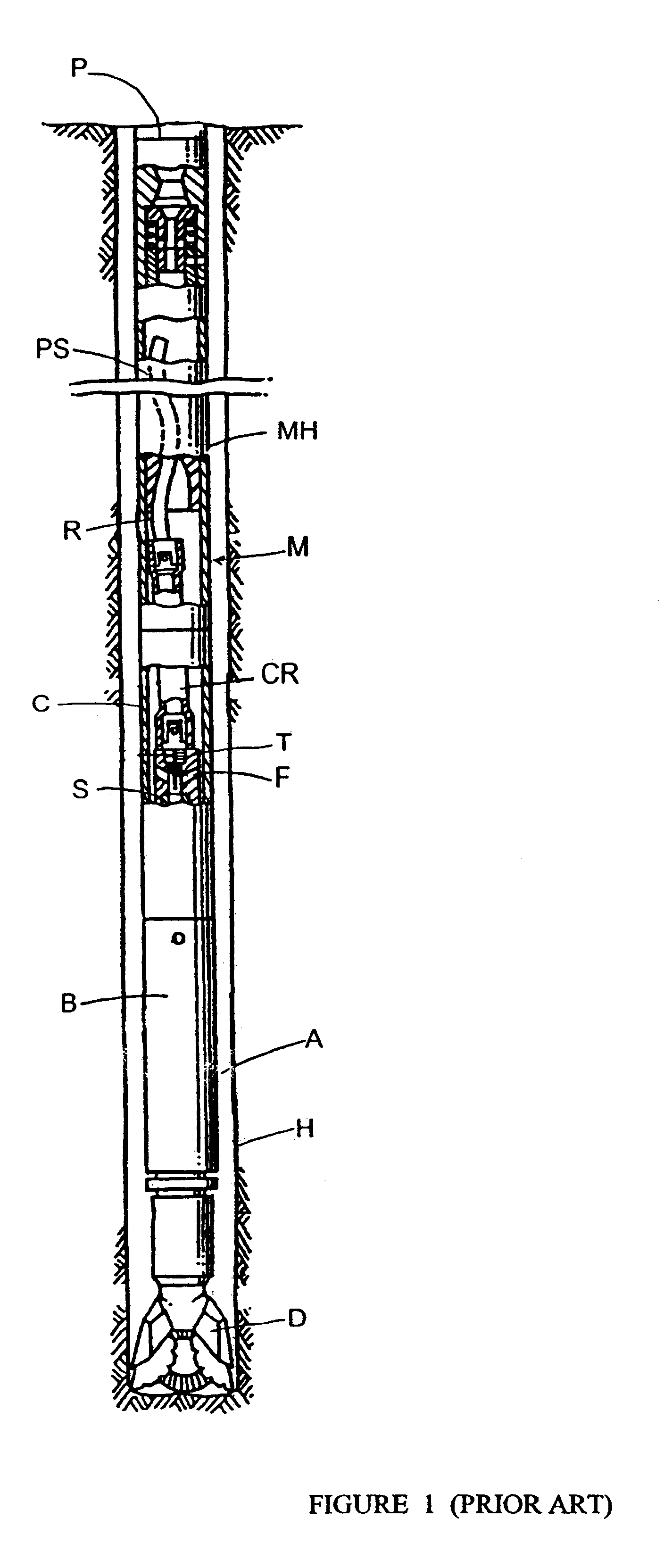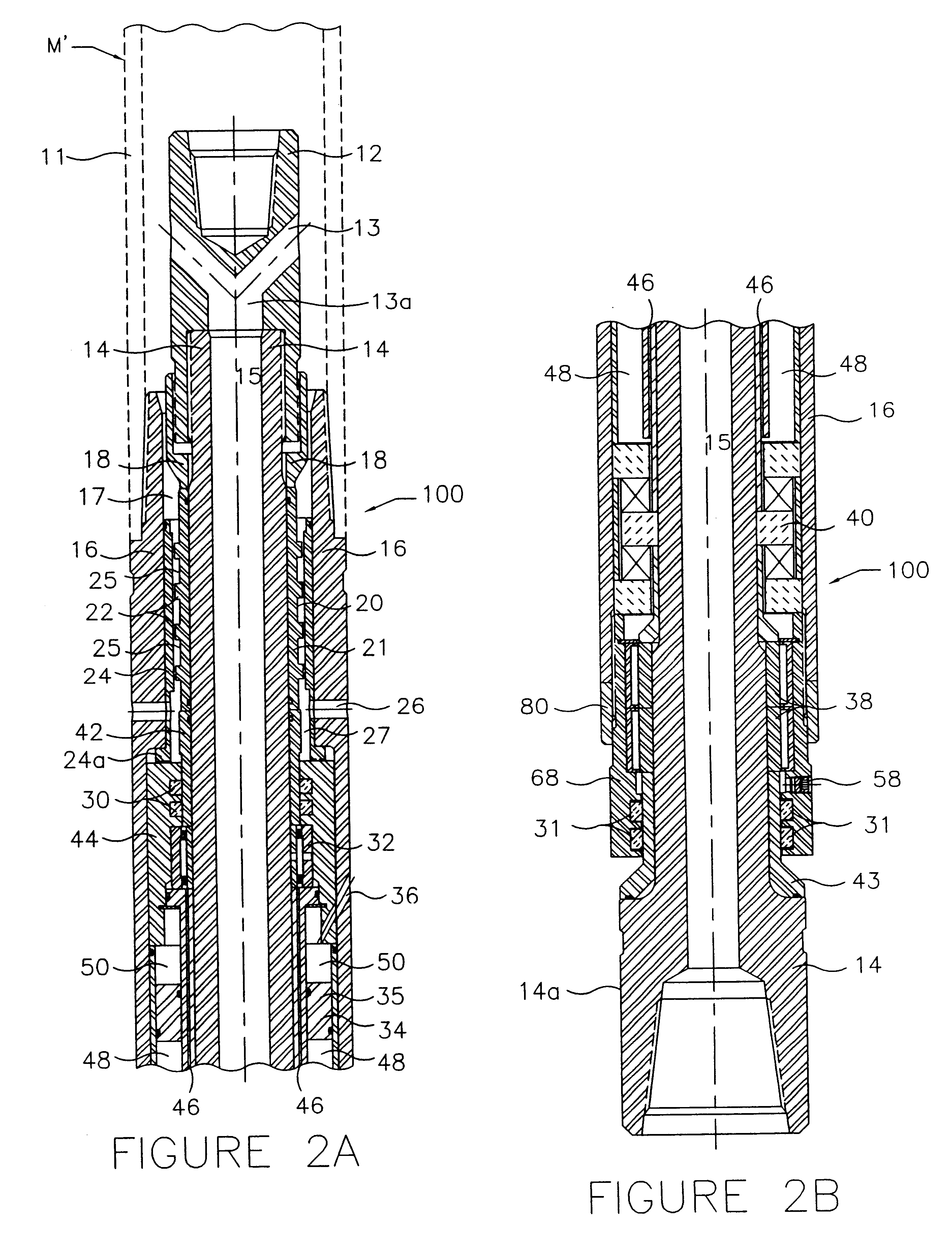Downhole oil-sealed bearing pack assembly
a technology of oil-sealed bearings and assembly parts, which is applied in the direction of sealing, transportation and packaging, mechanical equipment, etc., can solve the problems of introducing the polished bearing elements to abrasive particles such as mud, grit and formation cuttings, and the rotational bearing assembly must endure severe vibration, shock and axial and radial loading, and achieve the effect of eliminating large differential pressur
- Summary
- Abstract
- Description
- Claims
- Application Information
AI Technical Summary
Benefits of technology
Problems solved by technology
Method used
Image
Examples
Embodiment Construction
FIG. 1 shows a typical prior art downhole fluid motor M and drill assembly within a borehole H. During operation of the fluid motor M, drilling fluid or mud is circulated downwardly through a drill pipe string P through the power section PS into a connector rod housing C containing a connector rod CR. The connector rod housing C is secured to a relatively stationary motor housing MH and the connector rod CR is connected to a motor rotor R. The connector rod housing C is attached, often via a threaded connector, to an upper end of a bearing housing B. A rotatable hollow drive shaft S is secured within the bearing housing B. The drive shaft S extends downwardly through a lower end of the bearing housing B and connects to a drill bit D. At its upper end, the drive shaft S is attached to the connector rod CR by a drive shaft cap T.
The drive shaft cap T includes radial fluid passages F which provide fluid communication between the interior of the connector rod housing C and the bore of t...
PUM
 Login to View More
Login to View More Abstract
Description
Claims
Application Information
 Login to View More
Login to View More - R&D
- Intellectual Property
- Life Sciences
- Materials
- Tech Scout
- Unparalleled Data Quality
- Higher Quality Content
- 60% Fewer Hallucinations
Browse by: Latest US Patents, China's latest patents, Technical Efficacy Thesaurus, Application Domain, Technology Topic, Popular Technical Reports.
© 2025 PatSnap. All rights reserved.Legal|Privacy policy|Modern Slavery Act Transparency Statement|Sitemap|About US| Contact US: help@patsnap.com



